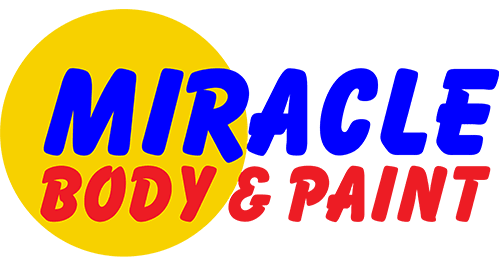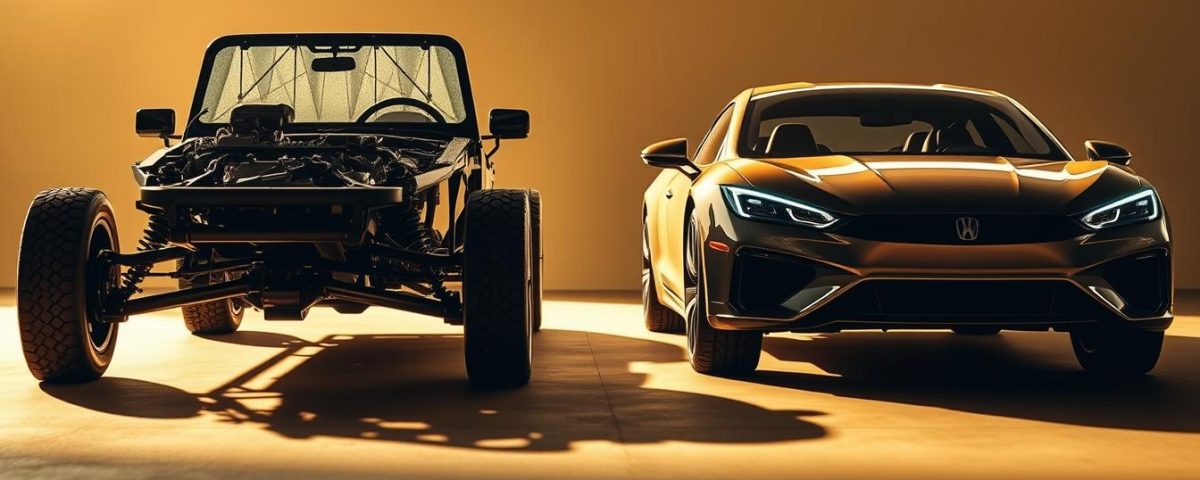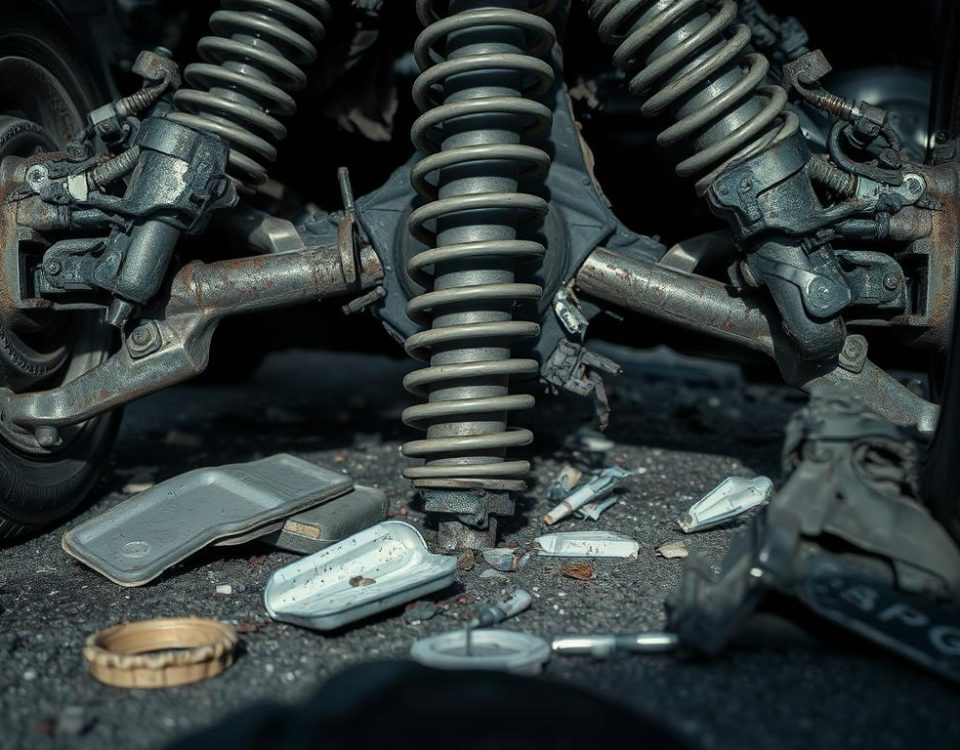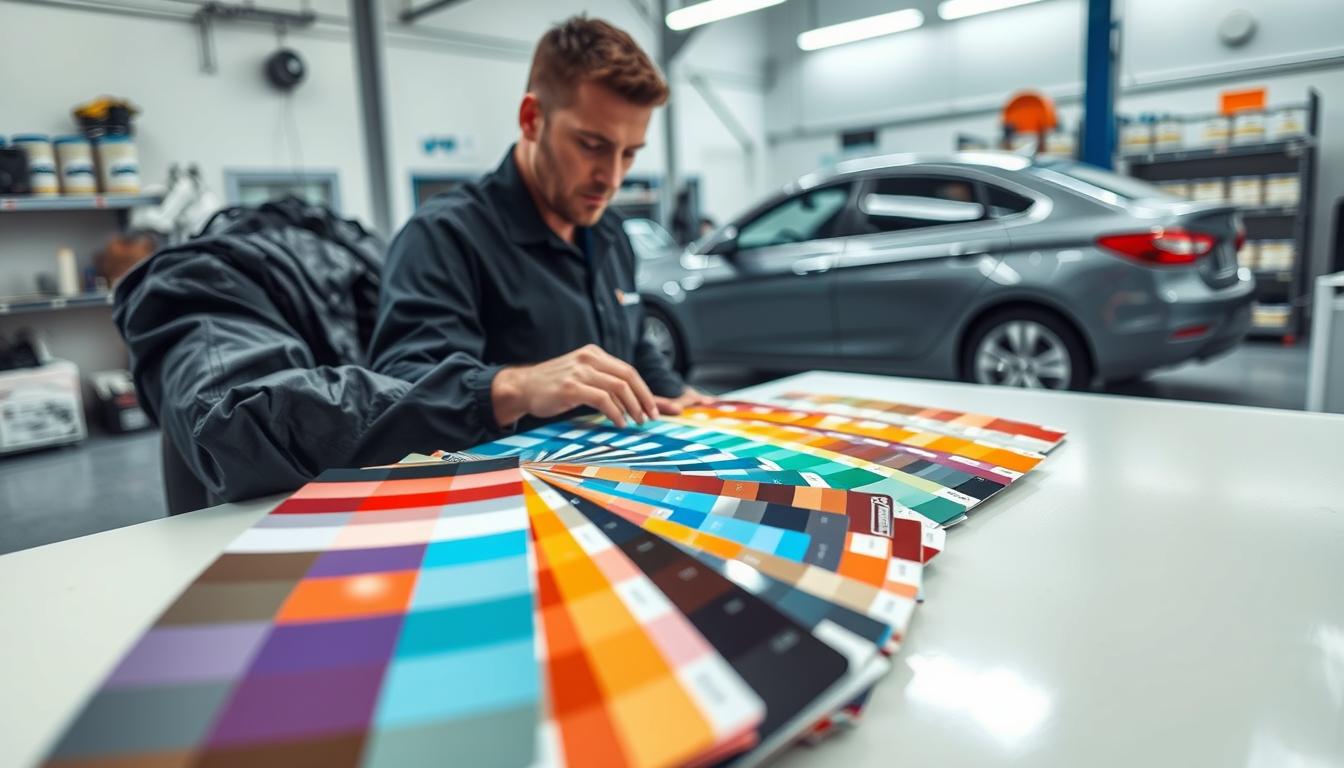
How to Choose the Right Paint Color After a Collision Repair
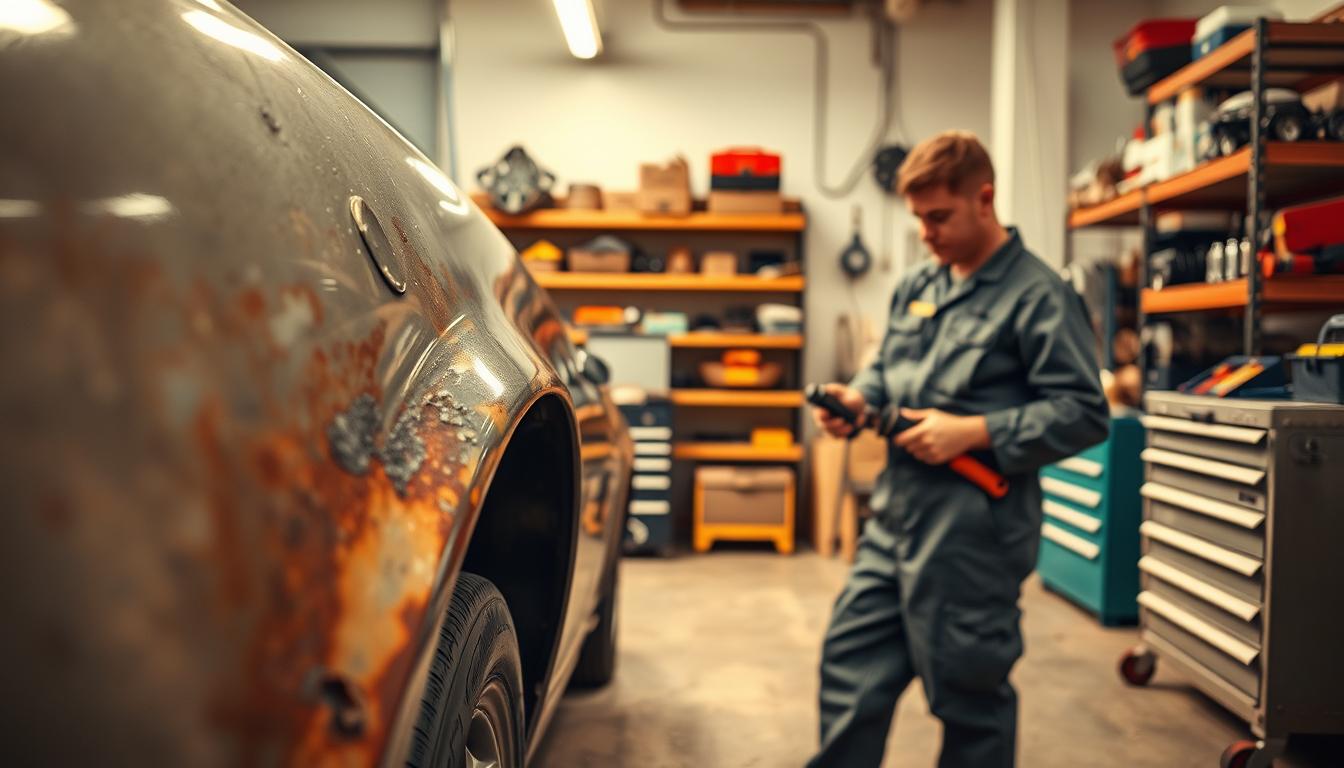
Dealing with Rust After a Collision
When shopping for a used vehicle, you might come across terms like “body on frame” or “unibody” construction. But what do these terms mean, and why is it crucial to understand the difference?
Essentially, the type of body construction affects the vehicle’s performance, safety, and overall durability. Body on frame construction features a separate body and frame, whereas unibody construction integrates the body and frame into a single unit.
Understanding the difference between these two types of construction is vital, especially when it comes to collision repair damage. If you’re looking for a reliable collision repair service, consider hiring “Miracle Body and Paint” to get your vehicle back on the road.
Key Takeaways
- Body on frame and unibody are two different types of vehicle body construction.
- The type of construction affects the vehicle’s performance and safety.
- Unibody construction is generally lighter and more fuel-efficient.
- Body on frame construction is often used in trucks and larger vehicles.
- Understanding the difference is crucial for collision repair and maintenance.
Understanding Vehicle Construction Types
Understanding the differences between various vehicle construction types is essential for making informed decisions when it comes to purchasing, maintaining, or repairing a vehicle.
Vehicle construction can be broadly categorized into two main types: frame construction and unibody construction. Each has its unique characteristics, advantages, and applications.
What is Frame Construction?
Frame construction, also known as body-on-frame construction, involves mounting the vehicle’s body on a separate chassis. This chassis is typically made of steel and serves as the foundation for the vehicle, supporting the engine, transmission, and suspension components.
Key characteristics of frame construction include:
- A separate chassis that provides the structural foundation
- The body is mounted on this chassis
- Often used in trucks, SUVs, and larger vehicles
This construction method is known for its durability and is commonly used in vehicles that require high towing capacity or are designed for off-road use.
What is Unibody Construction?
Unibody construction, on the other hand, integrates the body and frame into a single unit. This means that the vehicle’s body is not mounted on a separate chassis but is itself a structural component that provides strength and support.
The benefits of unibody construction include:
- Reduced overall weight, which can improve fuel efficiency
- Enhanced structural integrity, potentially improving safety in certain collision scenarios
- Better handling and stability due to the integrated design
Unibody construction is commonly used in passenger cars and some crossover vehicles, where its advantages in terms of weight and handling are particularly beneficial.
Key Differences in Design
Understanding the key design differences between frame and unibody vehicles is crucial for assessing their capabilities. The construction type of a vehicle significantly influences its overall performance, functionality, and safety.
Strength and Durability
Frame construction vehicles are known for their strength and durability, making them ideal for heavy-duty applications such as towing and hauling. The separate frame provides additional structural integrity, allowing these vehicles to withstand rigorous use. In contrast, unibody vehicles, while still durable, are generally designed for lighter loads and are not as robust as their frame counterparts.
Key advantages of frame construction include:
- Enhanced strength for heavy-duty applications
- Better suited for towing and hauling heavy loads
- Improved durability in harsh conditions
Weight Considerations
Unibody vehicles are typically lighter than their frame construction counterparts. This reduced weight contributes to better fuel economy and handling. The lighter structure allows unibody vehicles to be more agile and responsive, making them well-suited for passenger cars. On the other hand, frame vehicles, being heavier, often have a higher towing capacity and are more suitable for tasks that require substantial power and strength.
The weight difference between frame and unibody vehicles impacts their performance in various ways:
- Fuel efficiency: Lighter unibody vehicles generally achieve better fuel economy.
- Towing capacity: Heavier frame vehicles can tow more substantial loads.
- Handling: The lighter weight of unibody vehicles enhances their handling and maneuverability.
Flexibility and Rigidity
The design of frame and unibody vehicles also affects their flexibility and rigidity. Frame vehicles tend to be more flexible, as the separate frame can absorb some of the stress and vibrations from the road. Unibody vehicles, being more rigid, provide a more direct connection between the suspension and the body, resulting in a more responsive handling experience.
The rigidity of unibody vehicles offers several benefits:
- Improved handling and stability
- Better responsiveness to driver input
- Enhanced overall driving experience
In conclusion, the design differences between frame and unibody vehicles have significant implications for their strength, weight, flexibility, and handling. Understanding these differences is essential for choosing the right vehicle for specific needs and preferences.
Ease of Repair
Collision damage can be costly, and understanding how different vehicle constructions impact repair ease is vital. The type of vehicle construction plays a significant role in determining the complexity and cost of repairs after a collision.
Vehicles can be broadly categorized into two types based on their construction: frame and unibody. Each has its unique characteristics that influence the ease of repair.
Repairing Frame Vehicles
Frame vehicles, also known as body-on-frame vehicles, have a separate body and frame. This design makes it easier to repair or replace damaged body parts without affecting the frame. Repairing frame vehicles is often considered more straightforward because the body and frame are separate entities.
When a frame vehicle is involved in a collision, the damaged body parts can be removed and replaced with new ones, often without requiring extensive modifications to the frame. This can make repairs more cost-effective, especially for less severe damages.

Repairing Unibody Vehicles
Unibody vehicles, on the other hand, have their body and frame integrated into a single unit. This design provides several advantages, including improved structural integrity and reduced weight. However, when it comes to repairs, unibody vehicles can be more challenging.
After a collision, unibody vehicles often require more complex repairs because the damage can affect the structural integrity of the vehicle. Repairing unibody vehicles may involve more labor-intensive processes, such as welding and reshaping metal, which can increase repair costs.
Despite the challenges, modern unibody vehicles are designed with safety and repairability in mind. Many manufacturers use advanced materials and designs that help to mitigate the impact of collision damage.
In conclusion, while both frame and unibody vehicles have their advantages and disadvantages when it comes to ease of repair, understanding these differences is crucial for vehicle owners. By considering the type of construction and its implications on repair costs, owners can make more informed decisions about their vehicle’s maintenance and upkeep.
Impact on Safety Features
Understanding how frame and unibody constructions impact safety features is essential for vehicle owners. The type of construction not only affects the vehicle’s durability and performance but also plays a critical role in occupant safety during collisions.
Safety in Frame Vehicles
Frame vehicles have a separate frame that is designed to absorb and distribute the forces of a collision. This can provide a level of protection by maintaining the integrity of the passenger compartment. However, the added weight and rigidity of the frame can also affect how the vehicle responds to different types of impacts.
Key safety aspects of frame vehicles include:
- A robust structure that can withstand significant forces
- Potential for higher damage in certain collision types due to the frame’s rigidity
Safety in Unibody Vehicles
Unibody vehicles, on the other hand, integrate the frame and body into a single unit. This design is particularly effective in absorbing collision forces through crumple zones, which are engineered to deform and absorb energy, thereby reducing the impact on occupants.
The benefits of unibody construction for safety include:
- Enhanced crumple zones that effectively absorb collision energy
- Generally considered safer due to the optimized distribution of forces during an impact
Unibody vehicles are generally considered safer due to their crumple zones, which absorb the impact of a collision, reducing the force transmitted to the occupants.
Performance Implications
The construction type of a vehicle, whether frame or unibody, plays a crucial role in its overall performance and driving experience. This difference in construction significantly affects how a vehicle handles and responds to driver input.
Handling and Stability Differences
Unibody vehicles typically offer a smoother ride and better handling due to their lower center of gravity and integrated design. This design aspect contributes to improved stability, especially during cornering or high-speed maneuvers.
- Enhanced stability during high-speed driving
- Better responsiveness to steering input
- Improved overall driving dynamics
In contrast, frame vehicles, with their separate frame and body, can sometimes exhibit more flexibility, potentially leading to a less responsive handling characteristic.
Driving Experience Comparisons
The driving experience is also notably different between frame and unibody vehicles. Unibody vehicles are often praised for their agile handling and responsive steering, making them a favorite among driving enthusiasts.
On the other hand, frame vehicles, particularly trucks and some SUVs, are valued for their ruggedness and ability to withstand heavy loads and towing. The driving experience in these vehicles is often characterized by a more robust feel and greater ground clearance.
Cost of Repair and Maintenance
The type of vehicle construction plays a substantial role in determining repair and maintenance costs. Understanding these costs is crucial for vehicle owners to make informed decisions about their vehicle’s upkeep.
Frame Vehicle Repair Costs
Frame vehicles, with their separate body and chassis, can offer advantages when it comes to repair costs. The separate frame allows for easier replacement of damaged components, potentially reducing labor costs.
- Easier access to damaged areas
- Lower labor costs for repairs
- Availability of aftermarket parts
However, the overall cost of repair also depends on the extent of the damage and the specific vehicle model.

Unibody Vehicle Repair Costs
Unibody vehicles, with their integrated design, can be more complex and costly to repair, especially after significant damage.
- Higher labor costs due to complex repair procedures
- Potential need for specialized equipment
- Increased risk of additional damage during repairs
Despite these challenges, advancements in repair techniques and technology have made it more feasible to repair unibody vehicles efficiently.
When considering maintenance, both frame and unibody vehicles require regular upkeep to ensure longevity and performance. The cost of maintenance can vary based on factors such as vehicle age, model, and usage.
In conclusion, while frame vehicles may have an advantage in terms of repair costs due to their separate body and chassis, unibody vehicles offer other benefits that can offset these costs. Vehicle owners should consider these factors when deciding on their vehicle’s construction type and maintenance strategy.
Influence on Insurance Premiums
Vehicle construction, whether frame or unibody, has a notable impact on insurance costs. The type of construction influences not only the vehicle’s safety features and repair costs but also its overall risk profile, which insurers consider when determining premiums.
Insurance companies assess various factors, including the likelihood of damage in a collision and the cost of repairs, to calculate premiums. The construction type of a vehicle plays a crucial role in these assessments.
Insurance for Frame Vehicles
Frame vehicles, traditionally used in trucks and some SUVs, have a separate frame that can be more prone to damage in certain types of collisions. This can lead to higher repair costs, which may be reflected in higher insurance premiums. However, frame vehicles are also known for their durability and strength, particularly in heavy-duty applications.
When insuring frame vehicles, insurers consider the potential for costly repairs, especially to the frame itself. The overall cost of insurance can be influenced by the vehicle’s intended use, such as for heavy-duty hauling or towing, which can increase the risk profile.
Insurance for Unibody Vehicles
Unibody vehicles, common in most passenger cars, integrate the body and frame into a single unit. This design is generally considered to provide better protection in collisions due to its crumple zones and overall structural integrity. As a result, unibody vehicles may benefit from lower insurance premiums due to potentially lower repair costs and a reduced risk of severe damage.
The safety features inherent in unibody construction, such as improved crashworthiness, can lead to reduced insurance costs. Insurers often view unibody vehicles as having a lower risk profile, which can result in more favorable premium rates for vehicle owners.
Environmental Considerations
As concern for the environment grows, understanding the ecological footprint of different vehicle constructions becomes crucial. The way a vehicle is built affects not only its performance and safety but also its environmental impact.
The recyclability of vehicles is a significant aspect of their environmental footprint. Both frame and unibody constructions have their own implications for recycling processes.
Recycling Frame Vehicles
Frame vehicles, with their separate frame and body, can be more complex to recycle due to the multiple components involved. However, the steel used in frames is highly recyclable.
- The frame can be separated and recycled.
- Other components like engines and transmissions are also recyclable.
Recycling Unibody Vehicles
Unibody vehicles, being lighter and having a more integrated design, might offer advantages in terms of recyclability. Their lighter weight typically means less material used overall.
- Unibody vehicles often have a simpler structure, which can make some recycling processes easier.
- The use of lighter materials can reduce the overall environmental impact.
In conclusion, both frame and unibody constructions have their environmental considerations. Understanding these can help in making more environmentally friendly choices in vehicle manufacturing and recycling.
Industry Trends and Innovations
The future of vehicle manufacturing is being shaped by trends in frame and unibody construction. As the automotive industry continues to evolve, advancements in materials and design techniques are playing a crucial role in determining the direction of vehicle construction.
Evolution of Frame Construction
Traditionally, frame construction has been associated with strength and durability. Recent innovations have seen the introduction of advanced materials such as high-strength steel and aluminum alloys, which have significantly improved the strength-to-weight ratio of frames.
Some key advancements include:
- Use of high-strength, low-alloy steel for improved durability
- Incorporation of aluminum in frame construction for reduced weight
- Advanced welding techniques for enhanced structural integrity
Innovations in Unibody Design
Unibody construction has also seen significant innovations, particularly in the areas of material science and design optimization. The use of advanced computer-aided design (CAD) software has enabled manufacturers to optimize unibody structures for both safety and efficiency.
Notable trends include:
- Increased use of multi-material designs to optimize strength and weight
- Adoption of advanced manufacturing techniques such as 3D printing
- Integration of safety features into the unibody structure
Conclusion: Choosing Between Frame and Unibody
When deciding between frame and unibody vehicles, owners must consider several critical factors, including safety, performance, repair costs, and environmental impact. Understanding the differences between these two construction types is essential for making an informed decision.
Key Considerations for Vehicle Owners
Vehicle owners should weigh the strengths and weaknesses of each construction type. For instance, frame vehicles are often preferred for their durability and ease of repair, particularly for collision damage and frame repair. On the other hand, unibody vehicles offer improved handling and stability, making them a popular choice for many drivers.
If you’re a vehicle owner in need of collision repair or frame repair services, consider reaching out to Miracle Body and Paint. With two convenient locations in San Antonio, they offer top-notch service to ensure your vehicle is restored to its original condition. You can contact their North West San Antonio – Leon Valley location at (210)680-1987 or their North East San Antonio location at (210)858-3630.

